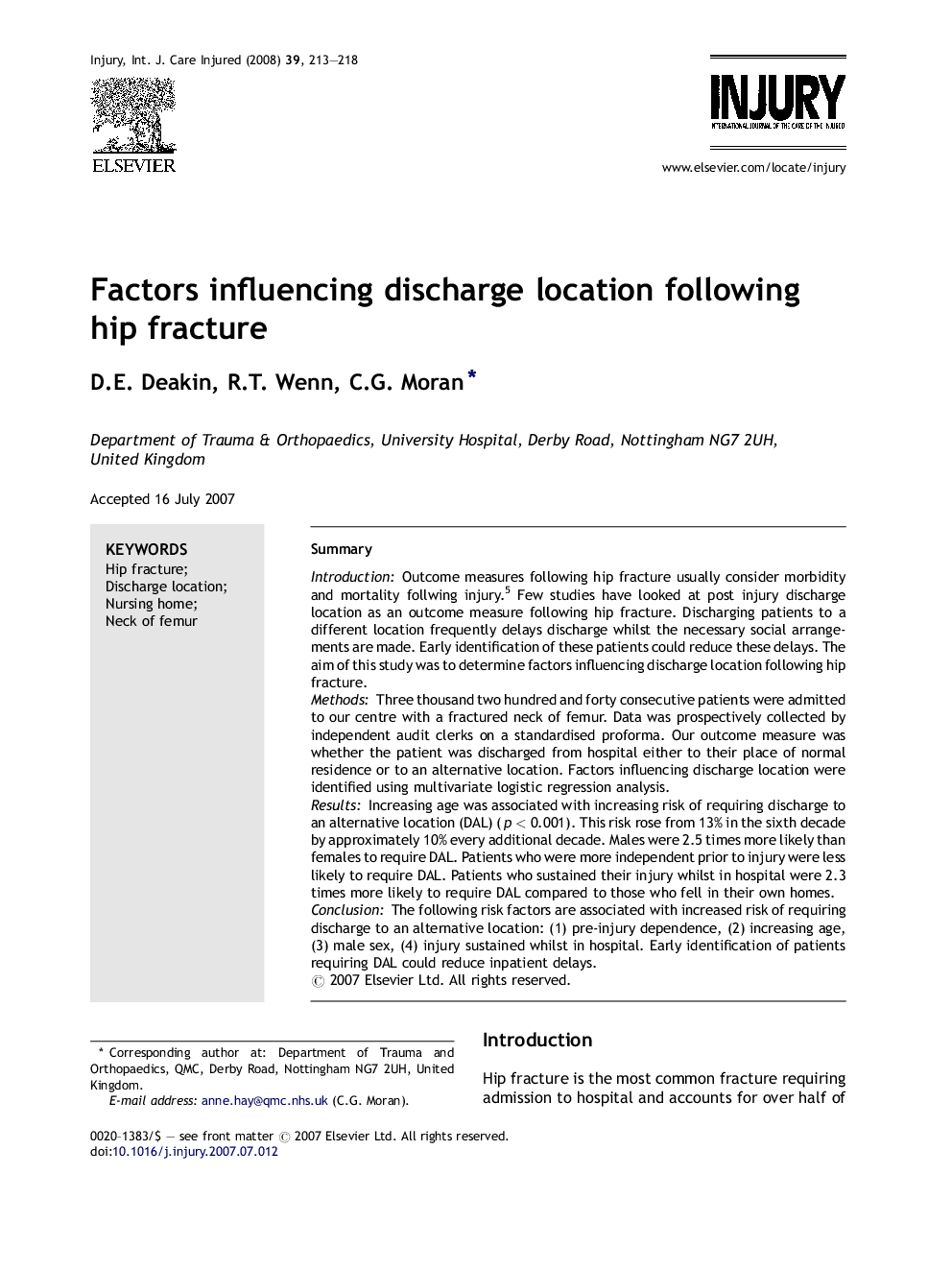| Article ID | Journal | Published Year | Pages | File Type |
|---|---|---|---|---|
| 3242192 | Injury | 2008 | 6 Pages |
SummaryIntroductionOutcome measures following hip fracture usually consider morbidity and mortality follwing injury.5 Few studies have looked at post injury discharge location as an outcome measure following hip fracture. Discharging patients to a different location frequently delays discharge whilst the necessary social arrangements are made. Early identification of these patients could reduce these delays. The aim of this study was to determine factors influencing discharge location following hip fracture.MethodsThree thousand two hundred and forty consecutive patients were admitted to our centre with a fractured neck of femur. Data was prospectively collected by independent audit clerks on a standardised proforma. Our outcome measure was whether the patient was discharged from hospital either to their place of normal residence or to an alternative location. Factors influencing discharge location were identified using multivariate logistic regression analysis.ResultsIncreasing age was associated with increasing risk of requiring discharge to an alternative location (DAL) (p < 0.001). This risk rose from 13% in the sixth decade by approximately 10% every additional decade. Males were 2.5 times more likely than females to require DAL. Patients who were more independent prior to injury were less likely to require DAL. Patients who sustained their injury whilst in hospital were 2.3 times more likely to require DAL compared to those who fell in their own homes.ConclusionThe following risk factors are associated with increased risk of requiring discharge to an alternative location: (1) pre-injury dependence, (2) increasing age, (3) male sex, (4) injury sustained whilst in hospital. Early identification of patients requiring DAL could reduce inpatient delays.
